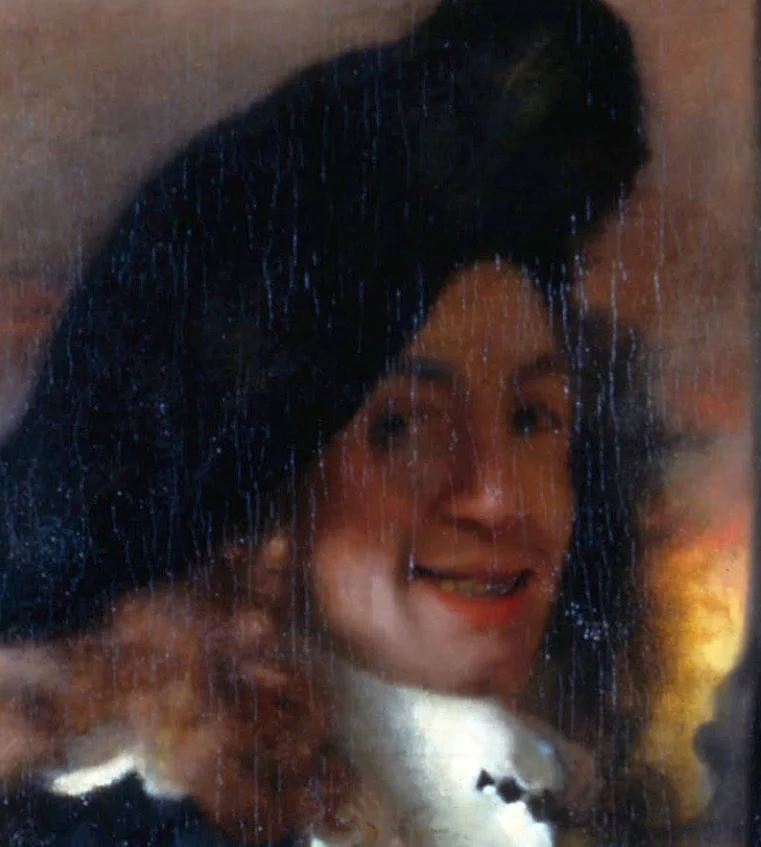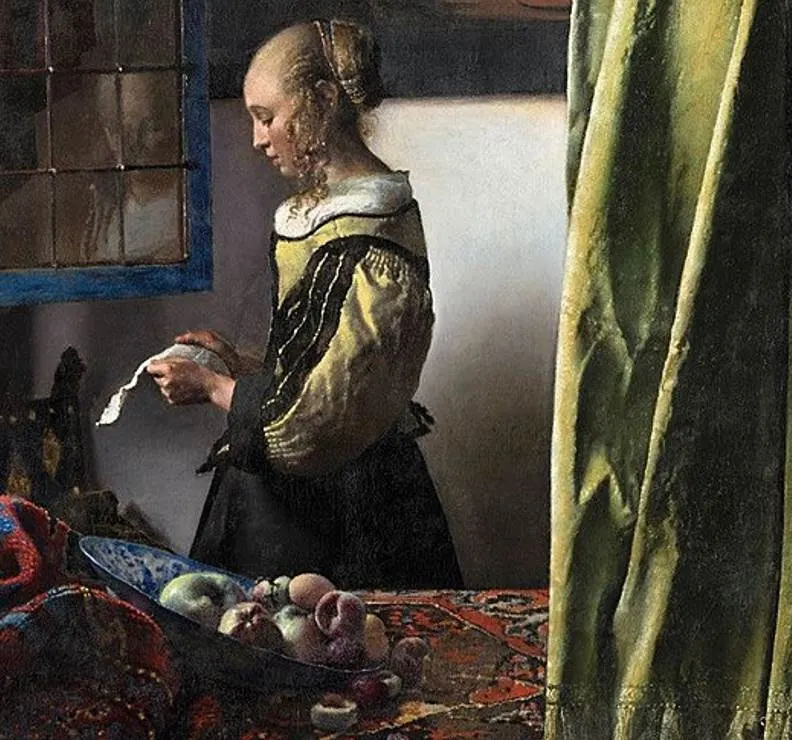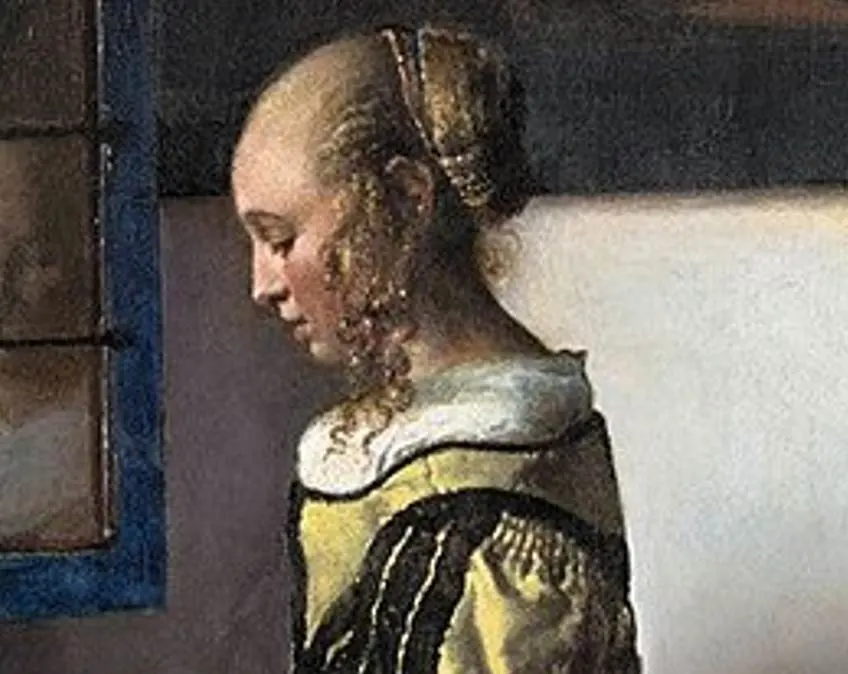One of the most intriguing paintings by Johannes Vermeer (1632-1675), the renowned Baroque artist of the Dutch Golden Age, wasn’t properly attributed to the artist until the 19th century. This is remarkable because it bears all the distinctive trademarks of this famous Dutch artist.
Let’s take a closer look at some of the most interesting facts about Girl Reading a Letter at an Open Window by Vermeer, a remarkable work of art that has several remarkable stories to tell.
1. It was painted in the late 1650s
The Dutch Golden Age was a remarkable period in the history of the Netherlands. The Dutch Republic was one of the leading forces in the world in a wide range of fields, something that translated into countless famous artists emerging as well.
Johannes Vermeer wasn’t a superstar by any means during his time but a renowned painter in his home city of Delft near The Hague. He joined the local Guild of Saint Luke on December 29, 1653, the main guild for painters in the city.
This means that he was already an established painter who solely lived from his art when he painted this work. Although the work isn’t dated, it’s estimated he completed it between 1657 and 1659.

2. It depicts a typical scene inside the house of the artist
Johannes Vermeer wasn’t an artist who produced monumental works of art. He focused on delicate little paintings and worked extremely slow, resulting in an oeuvre that probably didn’t exceed 60 oil paintings of which at least 34 are positively attributed to him today.
Although he painted a couple of outdoor paintings such as “View of Delft” and “The Little Street,” the majority of his paintings depict scenes taking place inside his own house.
The intimacy of the captured moment depicting one or multiple figures engaging in what appears to be a trivial activity such as reading a letter is what makes his paintings so intriguing. In that sense, Girl Reading a Letter at an Open Window can be classified as a typical Vermeer painting.

3. It featured several elements that the artist used in other paintings
The overall composition of the painting reminds us of “The Art of Painting,” an allegory in which the viewer can see the artist at work when he’s painting one of his models. That’s because of the ochre-colored drapery and rug-covered table that separates us from the girl reading the letter.

The light source coming from the left is also a typical characteristic of the artist who was a master of depicting light in his paintings. The green of the drapery reflecting of the young girl’s gown is masterly executed.
The fruit on the table features a peach that is cut in half and we can also see the reflection of the girl in the open window as she is carefully reading her letter.

4. The painting was restored in 2021 which revealed its true meaning
Art historians could only guess what the girl was reading before a restoration that was completed in 2021. It was already pretty certain that we can see the girl reading a love letter as the fruit on the table was deemed a symbol of passion and probably an illicit relationship.
One of the most intriguing facts about Girl Reading a Letter at an Open Window is that it was overpainted at a later date in history. The wall originally featured a painting but was turned blank at an unknown time by an unidentified painter.
A restoration project was completed in 2021 which removed this paint and revealed what the painting was about. It depicts a large putto which represents Cupid, another symbol related to love which confirms the theory that the girl is reading a love letter.

5. It’s one of the earliest examples of Vermeer’s distinctive technique
So how did Vermeer manage to depict the source of light bouncing off the elements in his paintings so realistically?
The answer is his use of the pointillé technique, a method in which he used small dots to create an effect as if the light reflects from them. In the brighter parts of this painting, we can see the small white dots that he used to create this effect, especially with the blond hair and clothes of the girl.
This technique is not to be confused with Pointillism, a technique in which small dots are applied all over the painting to create patterns that form an image. This technique was developed by Georges Seurat and Paul Signac in 1886, two famous Post-Impressionist artists.

6. Did Vermeer use a mechanical device to paint this masterpiece?
The extreme level of realism integrated into the delicate little artworks of Vermeer has made some art historians speculate whether or not he used an optical device to achieve this.
It has been suggested that he used a concave lens that was integrated into a camera obscura which allowed him to realistically depict the source of light. whether or not this is true remains unknown.
7. How big is Girl Reading a Letter at an Open Window by Vermeer?
While it’s certainly not the smallest work in the oeuvre of Johannes Vermeer, it’s also not the largest. The painting has dimensions of 83 × 64.5 centimeters (33 × 25.4 inches).
To give some reference to these numbers, his smallest painting is “The Lacemaker” with dimensions of 24.5 × 21 centimeters (9.6 × 8.3 inches), and his largest painting is “Christ in the House of Martha and Mary” with dimensions of 160 × 142 centimeters (63 × 56 inches).
8. Where is the painting located today?
Little is known about the original commission of the painting as it’s only mentioned that it was bought by Augustus III of Poland, Elector of Saxony, in 1742. This is how it ended up in Germany and eventually the city of Dresden. It was initially attributed to Rembrandt and Pieter de Hooch.
After World War II, the painting had to be saved from a devastating bombing of the German city. It was hidden inside a tunnel but the Red Army came across Girl Reading a Letter at an Open Window and hundreds of other works and brought them back to Russia.
Whether or not this was an act of plunder or preservation is up for debate, but the fact remains that the paintings were returned to Germany after the death of Joseph Stalin in 1955.
Today, the painting is on display in the largest museum in the city and one of the most popular museums in all of Germany, the Gemäldegalerie in Dresden.
It’s in good company in this museum because here you can also admire the Sistine Madonna by Raphael, Sleeping Venus by Giorgione, and the Dresden Triptych by Jan van Eyck, to name just a few masterpieces in the museum’s collection.

